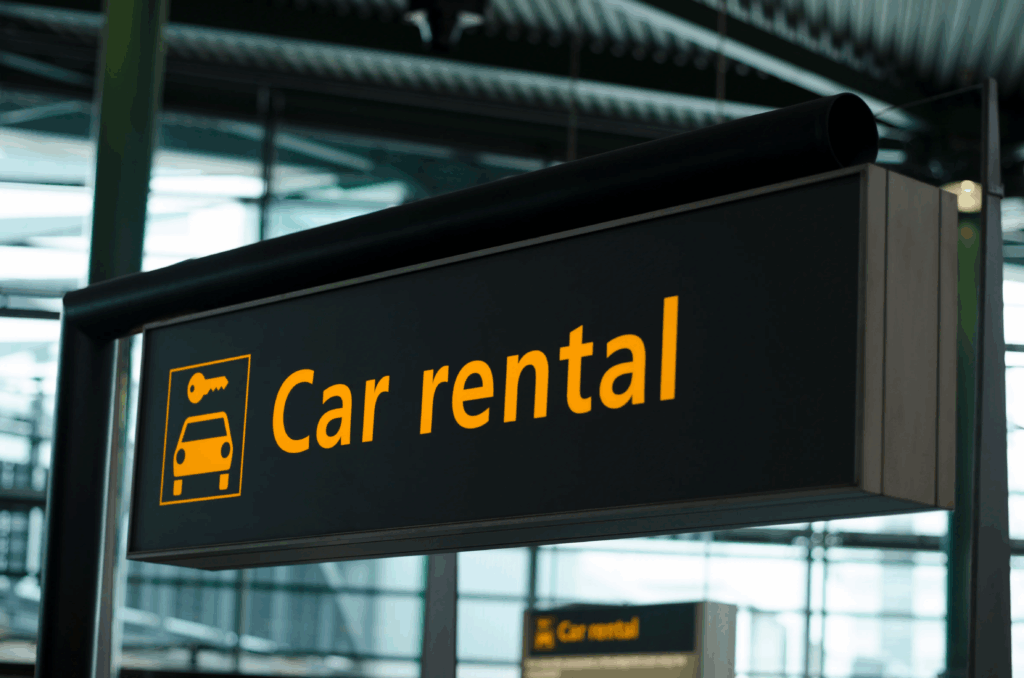If you’ve ever rented a vehicle from car rental companies, you’ve probably realized that there’s a lot more involved than just paying the daily rate you see online. At first glance, the deal might seem simple — pick a car, pay the rate, and hit the road. But once you dive into the fine print, you start noticing the add-ons: insurance coverage, fuel policies, mileage limits, late return fees, and a list of extras like GPS devices or child seats. All of these can quietly add up and turn what looked like a budget-friendly deal into a pricier one.
So, how exactly do car rental companies make their money? It’s not just from the base rental charge. The business model revolves around a combination of core rental fees, service upgrades, and optional add-ons that provide both flexibility and profit. For example, companies often offer multiple insurance options or vehicle upgrades that cater to travelers’ convenience and peace of mind — but these come at an additional cost.
Understanding where these charges come from doesn’t just satisfy curiosity; it’s a smart traveler’s advantage. Knowing how rental pricing works can help you avoid hidden costs, make better booking decisions, and get true value for your money. Whether you’re renting for a weekend road trip or a long business stay, a little knowledge goes a long way toward saving money — and ensuring your experience stays smooth from pick-up to drop-off.
Let’s pull back the curtain and explore the key ways car rental companies earn — and how being informed can help you steer clear of unnecessary expenses while making the most out of your next rental.
Table of Contents
1. Basic Rental Rates and Fleet Utilization
The foundation of any car rental business lies in its core pricing structure — the daily, weekly, or monthly rental rates. These rates form the base income for companies and are influenced by several factors such as market demand, vehicle type, season, and location. For instance, rates tend to rise during holidays or major local events when demand spikes, and they might drop during off-peak periods to encourage more bookings. Vehicle categories also play a huge role: a compact car designed for city driving costs much less per day than a luxury SUV or a van made for long family trips.
Behind the scenes, the key to profitability is something called fleet utilization — that is, how often a company’s cars are actually rented out versus sitting idle. The more a car is in use, the more it earns. According to industry insights, most rental companies aim for utilization rates above 75–80% to stay profitable, with average profit margins ranging from 10% to 15%. Maintaining that balance is a constant challenge in the business — ensuring cars are always available but never sitting unused for too long.
Companies like Mr. Rent A Car have refined this balance by offering a carefully curated fleet that meets different customer needs. From budget-friendly compacts for solo travelers to family SUVs and eco-conscious hybrids, their inventory caters to every kind of journey. This variety not only ensures customer satisfaction but also keeps cars rotating efficiently — maximizing both availability and revenue. In short, strategic fleet management and flexible pricing are what keep a rental business running smoothly and profitably, one trip at a time.
2. Piling on the Extras: Insurance, Fuel, and Add‑Ons
Booking a car is just the start. Add-ons are a significant revenue driver:
- Insurance packages and waivers: Car rental insurers offer a Collision Damage Waiver, liability coverage, theft protection, and more. These add-ons carry high margins, part of the classic model of “will renter bite?”.
- Fuel service charges: Many companies offer a “prepaid fuel” option—fueled by slight markups.
- GPS, child seats, extra drivers: Each of these small extras adds up. One insider explained on Reddit: “I can guarantee we made most of our money through insurance deals and corporate rentals throughout the week, not the weekend.”
3. Late Fees and Hidden Surcharges
Returning a rental car late might seem like a small mistake, but it can quickly become an expensive one. Most car rental companies calculate their rates based on strict 24-hour cycles, meaning even being a little over the return time can trigger extra costs. Typically, the first hour or so might be charged at an hourly rate, but once you cross the two-hour mark, it’s often billed as a full extra day. That’s why it’s always smart to plan your drop-off carefully.
Companies like Mr. Rent A Car offer a 30-minute grace period, giving customers a little breathing room in case of traffic or last-minute delays. However, beyond that window, fees can add up faster than expected — especially during peak travel times.
Late fees are just one part of the equation. There’s also a maze of additional charges that can catch many renters off guard. These may include airport surcharges, which cover the cost of operating near terminals, vehicle licensing fees to maintain registration compliance, and concession or facility charges that rental companies are required to pay to airport authorities or municipalities. Many of these aren’t arbitrary — they’re often mandated by local or federal regulations and simply passed on to the customer. Still, they can make a noticeable difference in your total bill if you’re not prepared for them.
It’s easy to think you’re only paying for the car itself, but in reality, you’re also covering the infrastructure that keeps the rental system running — from airport transport shuttles and parking permits to licensing costs and staff operations. The good news? Companies like Mr. Rent A Car clearly outline all potential charges upfront, so you’re never left with surprises when it’s time to pay. A little transparency goes a long way — and knowing what to expect helps you travel smarter and stay within budget.
4. Corporate Rentals and Long-Term Leases
Business rentals and long-term leases are among the most valuable parts of a car rental company’s business model. Unlike short-term rentals that fluctuate with tourism or seasonal demand, corporate clients provide consistency—steady bookings, predictable revenue, and repeat business. Many companies rent fleets for employees, business trips, or temporary projects, which can last weeks or even months. These bulk or repeat contracts are a win-win: clients enjoy better pricing and convenience, while the rental company enjoys dependable income and reduced downtime for vehicles.
For rentals that extend beyond 90 days, companies like Mr. Rent A Car categorize them as short-term leases rather than standard rentals. This small distinction makes a big difference. These leases require renters to purchase the company’s minimum insurance package, ensuring that both the vehicle and client are properly covered over the longer duration. It’s not just a safety measure—it also adds an extra layer of profit and protection for the company.
Long-term leases also help maximize fleet utilization. Instead of cars sitting idle between customers, they stay on the road generating consistent returns. The maintenance, servicing, and insurance are streamlined through these lease programs, creating efficiency and higher margins. For Mr. Rent A Car, this strategy blends customer satisfaction with sustainable profit—a model that keeps both corporate clients and the company running smoothly.
5. Fleet Depreciation and Resales
Cars are assets that start losing value the moment they hit the road, and for rental companies, managing depreciation is one of the most important parts of staying profitable. Every vehicle in a rental fleet represents a significant investment, so companies like Mr. Rent A Car have to balance usage, maintenance, and timing to make sure they recover as much of that investment as possible.
To keep things efficient, most rental firms purchase cars in bulk at discounted rates directly from manufacturers. This not only lowers the initial cost per vehicle but also gives them access to newer models with updated safety and fuel-efficiency features—something customers appreciate. Once these vehicles have served their time in the fleet—usually after one to three years—they’re sold off before major wear and tear begins to impact value.
This is where the remarketing phase comes in. Instead of holding on to aging vehicles, rental companies sell them in bulk to dealerships, auctions, or even directly to customers through special used car programs. By doing this, they’re able to recoup a large portion of the car’s original cost, effectively turning what could’ve been a major expense into another revenue stream.
For a company like Mr. Rent A Car, this strategy keeps their fleet modern, reliable, and appealing to renters while ensuring that depreciation doesn’t become a financial burden. It’s a smart, cyclical business model—buy in bulk, rent for steady income, sell strategically, and reinvest in the next round of vehicles.
What This Means for You

Book smart
It truly makes a difference. Before confirming your reservation, take a few minutes to understand how your rental company counts days, applies grace periods, and handles late returns. Most agencies, including Mr. Rent A Car, operate on a 24-hour billing cycle, meaning your return time should match your pickup time to avoid an extra day’s charge. Missing that window — even by an hour or two — can easily turn into another full day’s fee. Knowing this upfront helps you plan your schedule better and saves you from surprise costs later.
Next, take a close look at insurance coverage. Many renters pay extra for collision or damage protection without realizing their personal auto insurance or credit card already provides it. Double-check your policy before you book; you could save a significant amount just by skipping unnecessary add-ons. Companies like Mr. Rent A Car are upfront about these details, helping you make informed choices without pressure at the counter.
Lastly, be mindful of one-way and airport rentals. While convenient, they often come with location surcharges or drop-off fees that can quietly inflate your bill. If your plans allow, returning the car to the same location or choosing a non-airport pickup point can keep your total cost much lower.
Booking smart isn’t about cutting corners — it’s about knowing where your money goes and getting the best deal possible. With a little attention to detail and a reliable company like Mr. Rent A Car, you can enjoy your trip stress-free and budget-friendly.
Companies like Mr. Rent a Car stand out for honest pricing, great customer service, and transparent add-on policies. They’re upfront about insurance options and provide clean fleets—no surprises at drop-off.
Save around the edges
Small choices can make a big difference. When it comes to car rentals, the little things add up fast, so knowing where to trim costs helps you stretch your travel budget without sacrificing comfort.
Start by bringing your own GPS or smartphone navigation instead of paying for the rental company’s built-in system. It’s a simple switch that can save you several dollars a day.
Similarly, choosing a non-airport pickup location often means avoiding hefty concession or facility fees that airports typically add. With Mr. Rent A Car, you can easily book from nearby city branches and still enjoy the same reliable service without the extra cost.
Timing is another key money-saver. Return your car on time, ideally within the grace period, to avoid being charged for an extra day. A quick double-check of your return schedule can prevent those surprise late fees that sneak up at checkout.
Finally, only take the extras you truly need. Features like roadside assistance, child seats, or prepaid fuel might sound convenient, but not every trip requires them.
Think about your route, trip length, and what you already have — sometimes your own insurance or travel credit card covers what the add-ons promise.
When you pay attention to these small details, you end up saving more than you’d expect. With thoughtful planning and a customer-friendly company like Mr. Rent A Car, smart travel doesn’t have to mean cutting corners — just making wiser ones.
Case Study: A Trip to Vancouver

Imagine you’re flying into Vancouver for a quick getaway or business trip. You’ve already planned your itinerary, from Stanley Park to Granville Island, and you want the freedom to move around without depending on taxis or public transit. So, you decide to book an economy car with Mr. Rent A Car for four days — simple, affordable, and convenient.
At checkout, you make smart choices. You decline the Collision Damage Waiver because your credit card already offers rental coverage, saving you a few extra dollars per day. You skip the optional GPS, since you’re comfortable using your phone’s navigation, and you bring your own child seat instead of renting one. These small decisions keep your total cost minimal while giving you everything you actually need.
When you pick up the car, it’s smooth sailing — the vehicle is clean, ready, and the staff clearly explains the return policy. You collect it at 10 AM on your first day and plan your schedule so you can return it around the same time at the end of your trip. On the fifth day, you pull in at 9:45 AM, just 15 minutes before the deadline — well within Mr. Rent A Car’s 30-minute grace period. That means no hidden “late return” fees, no unexpected charges, and no stress.
In the end, you only pay the base daily rate you were quoted — far less than what a bundled deal from a large aggregator site would’ve cost. You got transparent pricing, flexible timing, and great service — all without the typical last-minute add-ons that inflate your bill. It’s a perfect example of how, with the right planning and a trustworthy rental company like Mr. Rent A Car, you can enjoy the road on your terms, with no surprises and no fine-print traps.
Final Takeaway

Understanding how car rental companies make money gives you a real advantage as a customer. Once you know what drives those price tags, you start seeing every charge for what it truly is — not just a mystery line item, but part of a clear business model. This knowledge helps you make smarter decisions every time you rent, saving money while still getting the convenience and comfort you need on the road.
Start by sticking to reputable companies that are transparent with their pricing, like Mr. Rent A Car. Always read through the policies carefully instead of skimming the fine print — that’s where important details about insurance, fuel charges, or late fees often hide. Knowing these terms upfront means you won’t be caught off guard later.
If your credit card or personal insurance already covers collision or theft protection, you can safely skip add-ons like extra insurance or GPS units — they often cost more than they’re worth. Always aim to return your vehicle on time (or even slightly early), and if possible, book from a non-airport location to avoid surcharges tied to airport concession fees.
A little bit of research and awareness can go a long way. You’ll know which extras to decline, how to avoid unnecessary charges, and how to get the most value for your rental days. With these small but powerful steps, you can enjoy the freedom of having your own set of wheels — exploring cities, coastlines, or mountains at your own pace — without spending a penny more than necessary.
So the next time you rent, do it with confidence, a little insider knowledge, and a trusted company like Mr. Rent A Car by your side. Safe travels and happy driving!
Airport Car Rental Alberta Alberta road trip from Calgary Banff Best Car Rental in Coquitlam Burnaby Calgary Calgary International Airport Calgary to Banff Canada Car Insurance Car Rental Car rental in burnaby Car rental in Lax Airport Car rental insurance Car rental in Surrey Cheapest car rental in Orlando Coquitlam Coquitlam Car Rental Hertz jasper LAX Airport LAX Car Rental los angeles car rental Mr rent a car Ontario International Airport Orlando Orlando florida Orlando international airport Orlando International Airport (MCO) Orlando theme park Renting a Car Richmond Surrey Tesla Car Rental tips for car rental Top Places In Calgary trip Vancouver Vancouver Airport Vancouver Car Rental Vancouver International Airport Vancouver International Airport YVR YVR YVR Airport
- Cheap Car Rental Surrey: Affordable & Reliable Options with Mr. Rent A Car
- Choosing Family Car Rental in Richmond: Comfort, Space & Convenience with Mr Rent A Car
- Car Rental Near Edmonds Station: Easy, Affordable, and Convenient with Mr Rent A Car
- Car Rental Near Coquitlam Station: Seamless Rentals with Mr Rent A Car
- Car Rental Near Richmond: Discover Ease and Value with Mr. Rent A Car


